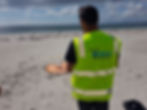Shark Mission
- info4912058
- Sep 15, 2017
- 1 min read
Our Pantom 4 down in Busselton equipped with a shark detection system powered by artificial intelligence patrolling the West Australian beach in a bid to improve safety.
The battery-powered drone provide a live-video feed to a drone operator who then uses the shark-spotting software to identify sharks in real time and with more accuracy than the human eye.
Studies have shown that people have a 20-30 percent accuracy rate when interpreting data from aerial images to detect shark activity. Detection software can boost that rate to 90 percent, said Dr Nabin Sharma, a research associate at the University of Technology Sydney’s School of Software.
“It’s not about replacing human beings all together, it’s about assisting human beings to get the work done in a better way with more accuracy. That’s what the application is meant for,” said Sharma.
Aerial videos of sharks from publicly available sources are used to train the system’s algorithms and differentiate sharks from other marine creatures, surfers, swimmers and boats.
It can then tag sharks and other marine life, such as dolphins and whales, in real time.







